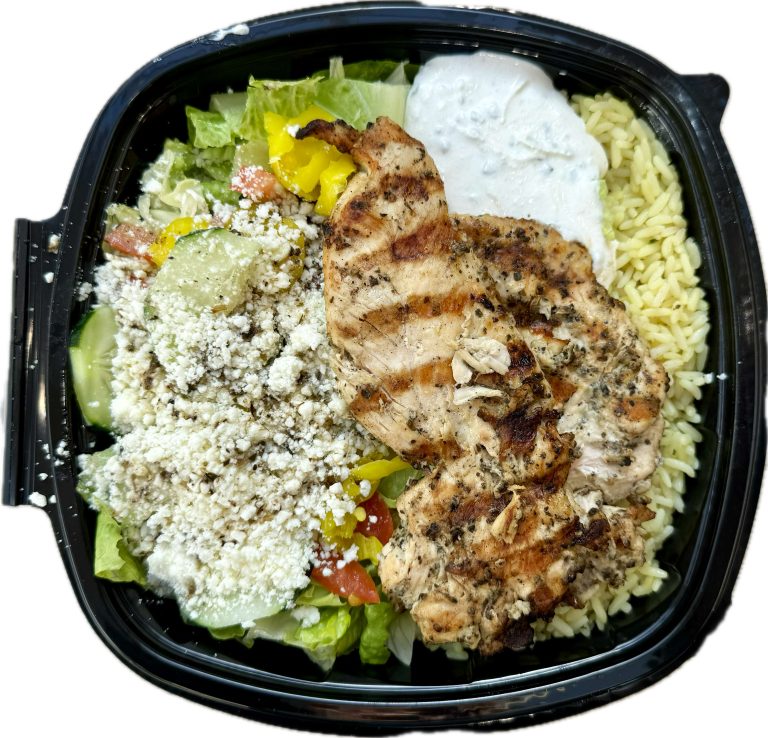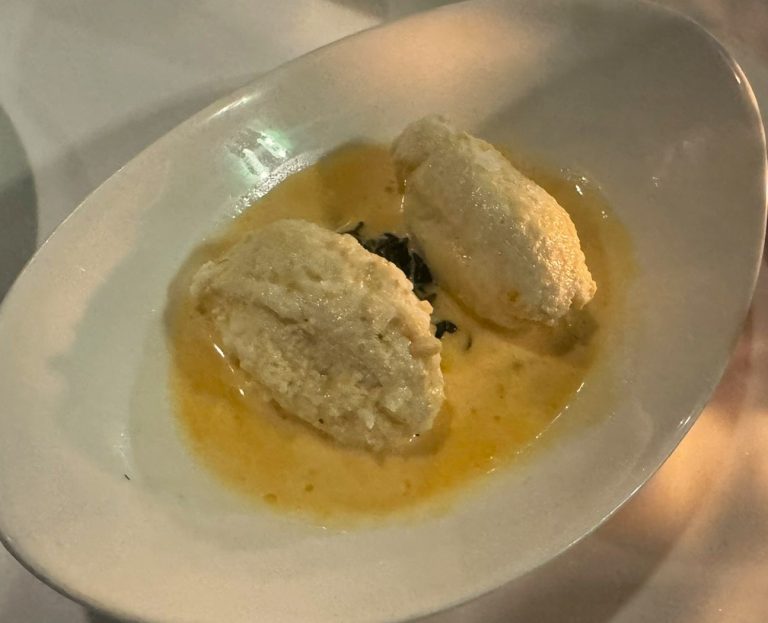Here’s the clues to look for to avoid dropping $500 on a flop
For many eaters, choosing a restaurant for dinner with friends is a crapshoot.
A party of four lays $500 on red or black, and hopes the ball bounces their way. Walking up to a new restaurant’s door, you feel blind date jitters. Will you get lucky tonight?
Even after 15 years of paying close attention to restaurants, I still gamble. But that experience has given me an edge at this particular game. If a diner knows what clues to look for, they can even the odds at the tables, or even bend them in their favor.
Here’s how I play the game.
I’m a detective from the Restaurant Assessment Bureau. My job is to gather intel, then offer odds on whether a restaurant will please me.
It’s more like math than magic. If you’re willing to do the legwork to investigate your next suspect, you’ll dramatically narrow the odds of a “bad beat.”
This is how to build a case.
Detectives scour information sources to build a file. Then use it to make a judgment call.
Review what the restaurant has told the world about itself, and what outside authorities say. Look for witnesses, in person and online. Then go see the subject, in person, with your eyes and ears open.
Then decide.
Most legwork can be done sitting down. During commercials, even.
Look at the restaurant’s Google card. Pull up the hours. Take a screenshot.
Now check the hours listed on the restaurant’s social media accounts. Almost every restaurant has a Facebook page, and many have Instagram accounts.
Now call the restaurant. Ask: “What hours are you open during the week?”
If all the hours match, super, gold star. If not, the human version rules. The person answering the phone at the restaurant may seem rushed or harried. As long as they’re not snotty about it, that’s not a demerit.
Either way, into the file. As you assemble your dossier, the more question marks you make, the bigger the real question looms: why should I spend my rare night out in the hands of these people?
Return to its social media. Read its pages and posts. Are they active? Do posts tell potential customers why they should come in today, this weekend, for the holidays?
Read its website, if it has one. Some restaurants don’t. As a rule, restaurants relying on social media and a Google page are not well-capitalized. That’s not a disqualifier for me. I’ve found many praiseworthy meals from places with only a Facebook account, or just a GrubHub page.
But if a restaurant aiming to lure upscale clientele hasn’t invested in a proper website, their welcome mat to the world, you should wonder why.
A restaurant’s website can signal its owners’ attitude towards finding new customers. If the hours, phone number, and a link to the menu are not on the first page, they don’t know, or don’t care, what it takes to get new customers these days. Maybe the owner is feeling sanguine about their future, or they decided what their nephew came up with was good enough, and free.
Either way, a shabby restaurant website is like a rusty screen door at the foyer of a grand mansion. A spectacular edifice, but you may conclude that despite being dukes and duchesses, the owners can’t afford the upkeep.
If you see a lot of sliding moving pictures and little information, consider the fact that restaurants exist for different reasons. While most are focused on feeding people and paying workers, some restaurants are there to keep a wealthy person busy, or fill fallow real estate.
Look for the “about” page. Some places have stories that they want to share, besides the food. Read up on the place. In between the usual declarations of it being the best thing since sliced bread, does the story make sense? Does it contain spelling or grammatical errors?
Improper English in business communication can indicate lack of professionalism, or a writer who learned English later in life. Into the file.
Read the menu. First, check to see if it’s out of date, with dishes or prices not currently in effect at the restaurant. Outdated website menus indicate a restaurant unable to meet its minimum information responsibilities.
This is not disqualifying by itself. Many operators are running restaurants with a minivan full of people, and everyone is too busy. But it goes in the file.
But if it represents itself as a first class professional operation and they have a menu on their website containing outdated prices or dishes, you can’t get, that’s a lapse in professionalism.
Is the menu accurate? Is the Caesar in Caesar salad spelled correctly? Does it consider shiitake mushrooms wild? Does it say anything about automatic gratuities for large parties or anything else policy wise you should note?
Does the website give you directions on making reservations?
Then, don’t laugh, go to Yelp. Sort for newest reviews first, and go through a few screens having a look at what people have talked about. Pull up a couple one-star reviews and see what they have to say, even if they are small in number.
Try to get a sense of the parameters of what people have posted. Somebody is going to snipe at every single restaurant. But if you see a pattern pointing out recent developments that have turned people off, to the file.
Go through some Google reviews, too. If you see an owner or member of the staff sniping back at people criticizing their place, I wouldn’t go there. Toxic attitudes can be as poisonous as spoiled food.
In my professional life, that search plus interviews with associates with trusted palates who have eaten in those places weeds out half of the places. The others need a visit.
You can read stuff all day on the Internet and not know for sure if the place is worthwhile. Many chefs can write a compelling menu, but fewer can make the promises in their dish descriptions ring true on the plate. So I show up and pay money to try the food.
Restaurant exteriors are notoriously deceiving. Sharp decor can surround a dull menu. At the door, the dossier goes into effect in real time as I shift my attention to the scene.
I watch the people who work there. Are they looking at each other? In restaurants where something is going wrong, the staff is trying to get through the day without murdering someone. That does not mean they caused the problem, just that there is a problem.
Are they hurrying, moving in a way that signals exasperation more than efficiency?
Are you greeted swiftly? Are you treated like a problem to be disposed of, or a guest to be welcomed with thankfulness? If you find yourself amid a clot group of folks waiting for a staffer to register their presence, consider how long it takes, and the message sent.
Breathe deep. Undercapitalized restaurants often have under performing HVAC. To cut costs, especially in winter, some operators won’t fully ventilate the kitchen, leading to unpleasant cooking smells, old oil, becoming discernible in the dining room.
If a place smells of anything other than good things, it makes me wonder. What else is going on that I don’t know about that has not been attended to properly?
If you’re standing at the hostess waiting, pick up a menu. Flip through it. If the menu is splattered with food, or otherwise besmirched, think twice about eating there. They hand you these things before you give them money.
Look at the people who are dining. Do they seem to be having a good time? If you see somebody frantically waving at a serving person trying to get their attention, make a note. If you see two, ask yourself if you want to be the third.
Walking out after arriving for a reservation is a last resort. It’s the worst time to decide you don’t like a place.
That said, parties standing at the hostess stand owe the restaurant nothing but politeness. If your stomach says no, inform the staff, and leave before you are seated.
It’s a reservation, not a blood oath. Like car buyers waiting in the lobby of a car dealership, you can back out on the potential sale.
Plus, most operators would rather see you scoot than end up complaining to your friends about their restaurant.
Perhaps ducking out after you arrive seems beyond the pale. If you’d spent as many nights as I have over the last decade walking towards tables thinking, “I might have made a huge mistake” and then seeing what happens, you might feel differently.
My assessment system has allowed me to to bail out on so many gastric suicide missions that I feel obliged to share.
Even if you don’t throw a smokescreen – look aghast at your phone and plead drunken babysitter or what have you – what’s the worst that can happen? You can get barred from the premises. Gosh.
Here’s the bottom line: Every time you shave down the odds of a restaurant gamble, your chance of celebrating grows.
If it all seems unbearably tedious, let me ask you this: Do you have another cost-free hobby that can save you $500 a night?
#30#




